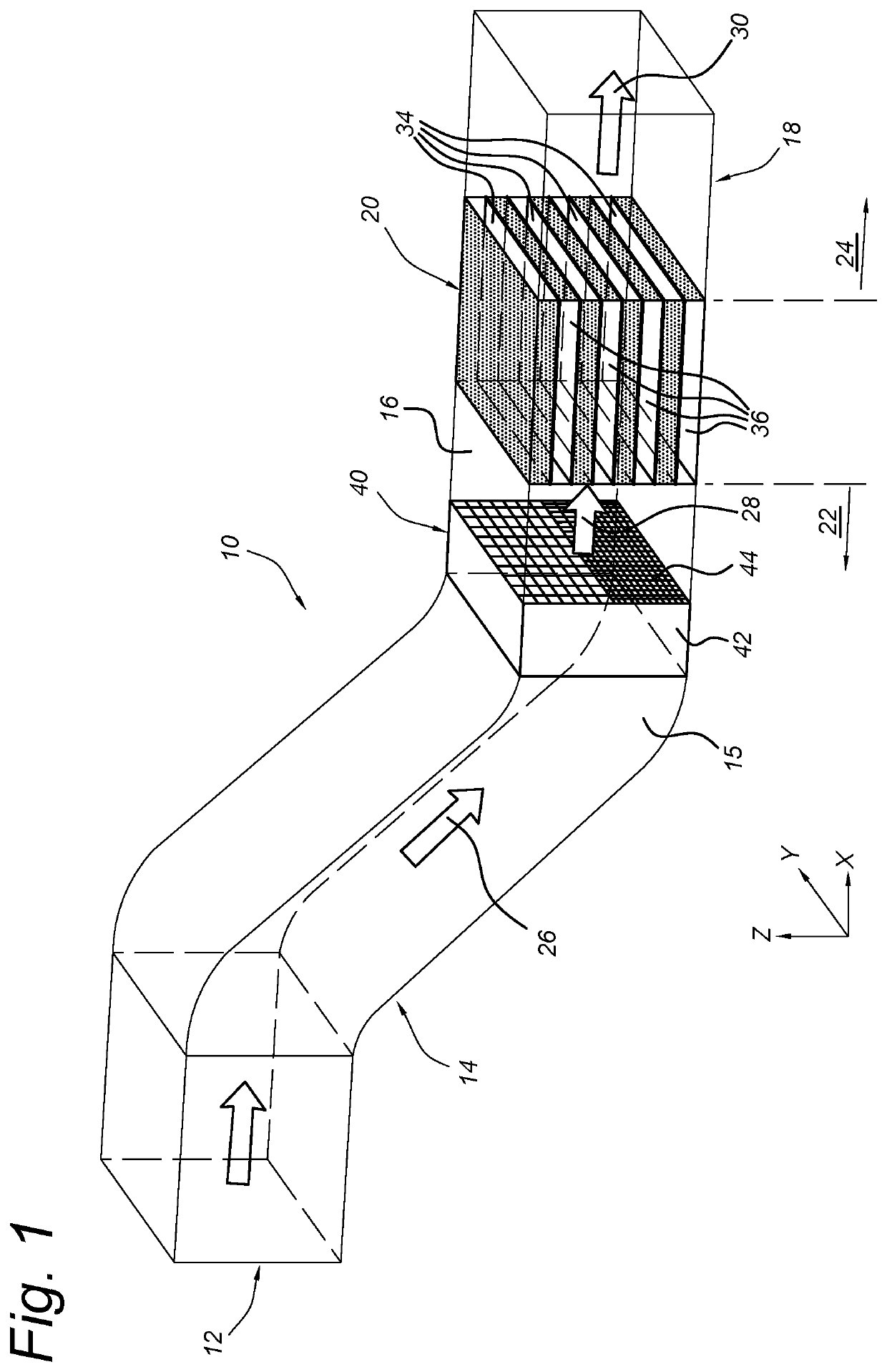Gas Flow Conditioner Device for a Heat Exchanger
a technology of flow conditioner and heat exchanger, which is applied in the direction of indirect heat exchangers, heating types, lighting and heating apparatus, etc., can solve the problems of difficult to predict the occurrence of such a situation, the hot side of the heat exchanger is condensed and corrosion, and the flow asymmetry at the outlet of the heat exchanger is pronounced, so as to facilitate manufacturing and installation, easy to remedy, and easy to manufacture
- Summary
- Abstract
- Description
- Claims
- Application Information
AI Technical Summary
Benefits of technology
Problems solved by technology
Method used
Image
Examples
Embodiment Construction
[0029]The following is a description of certain embodiments of the invention, given by way of example only and with reference to the figures.
[0030]FIG. 1 schematically shows a perspective view of a portion of a heat transfer system 10. The heat transfer system 10 includes a sequence of conduits 12, which are in fluid communication to define a passage for a flowing gas 26, 28, 30. The conduits 12 are connected to each other, and to a heat exchanger (HE) device 20, and allow the flowing gas to traverse the HE device 20.
[0031]Reference symbol X is used to indicate a longitudinal direction, corresponding with a local direction of macroscopic gas flow. This flow direction X corresponds with the local direction of a sufficiently straight portion of the conduits 12, and may vary along the system of conduits 12. The term “upstream” and “downstream” designate directions opposite to and along with the flow direction X, respectively. Reference symbols Y and Z are used to indicate (local) trans...
PUM
 Login to View More
Login to View More Abstract
Description
Claims
Application Information
 Login to View More
Login to View More - R&D
- Intellectual Property
- Life Sciences
- Materials
- Tech Scout
- Unparalleled Data Quality
- Higher Quality Content
- 60% Fewer Hallucinations
Browse by: Latest US Patents, China's latest patents, Technical Efficacy Thesaurus, Application Domain, Technology Topic, Popular Technical Reports.
© 2025 PatSnap. All rights reserved.Legal|Privacy policy|Modern Slavery Act Transparency Statement|Sitemap|About US| Contact US: help@patsnap.com



